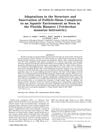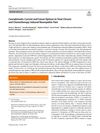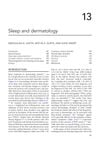Search
forLearn
4 / 4 resultslearn Osteopontin
signaling protein that, when suppressed, may grow hair by reducing inflammation and stem cell loss
learn Thymosin Beta 4
learn Low Level Laser Therapy
laser therapy for anti-inflammatory and likely insignificant hair regrowth effects
Research
5 / 1000+ resultsresearch Developmental Timing of Hair Follicle and Dorsal Skin Innervation in Mice
Nerve growth in mouse skin and hair follicles happens in stages and is closely linked to hair development.
research Sensory Reinnervation of Human Skin by Human Neural Stem Cell-Derived Peripheral Neurons Ex Vivo
Human skin can be reconnected to nerves using stem cells, which may help with skin health and healing.

research Adaptations in the Structure and Innervation of Follicle-Sinus Complexes to an Aquatic Environment as Seen in the Florida Manatee (Trichechus Manatus Latirostris)
Manatee whiskers are specially adapted for touch in water.

research Cannabinoids: Current and Future Options to Treat Chronic and Chemotherapy-Induced Neuropathic Pain
Cannabinoids may help treat chronic and chemotherapy-induced neuropathic pain, but more research is needed to confirm their effectiveness and safety.

research Neuroimaging of Sleep and Depression
Sleep problems and skin issues affect each other; poor sleep can worsen skin conditions, and some skin treatments can improve or harm sleep quality.
Community Join
5 / 81 resultscommunity The end of balding: We may have just found the secret to hair regrowth
MCL-1 is important for hair follicle stem cell survival, but its impact on human hair regrowth is unclear. Minoxidil and finasteride are the main treatments, with doubts about new discoveries leading to effective human solutions soon.

community Compressed part of research of theory of androgenic/anabolitic balance. AGA h-responders analytic. Theory of physio-metabolitic method of anti AGA treatment
The treatment for androgenetic alopecia involves using finasteride and minoxidil with intense exercise and cold exposure to boost metabolism and reduce androgenic effects, potentially leading to hair regrowth. This approach may activate biological pathways for improved hair and overall health.

community If You Have DUPA, PLEASE READ THIS: Everyone Should Be Scalp Biopsied
Scalp biopsies are crucial for diagnosing hair loss conditions like Diffuse Unpatterned Alopecia (DUPA) and retrograde hair loss, as treatments like finasteride and dutasteride may not be effective if other conditions are present. Combining PPAR-GAMMA agonists with retinoids could improve treatments for conditions like Lichen Planopilaris.
community Story time! The Great Unbalding (PP405)
PP405 is a promising new hair loss treatment that may reactivate dormant hair follicles without side effects. It could surpass traditional treatments like minoxidil and finasteride if successful in further trials.
community Summary of Procapil video by Haircafe
Procapil is marketed as a natural hair loss treatment but lacks strong evidence and is industry-biased. Minoxidil and Finasteride are the only FDA-approved treatments for androgenetic alopecia.